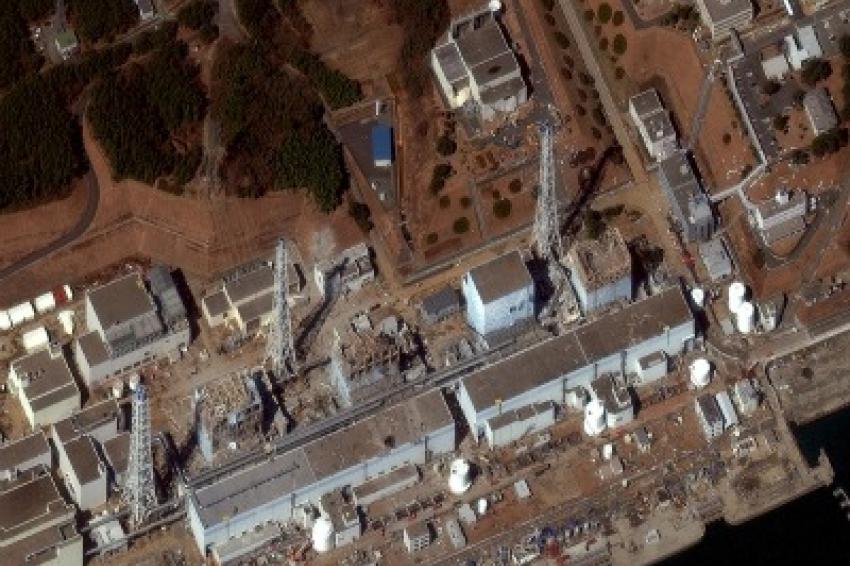Fukushima Daiichi: What is Going on at Japan's Damaged Nuclear Reactor?
Update for April 1
Japanese engineers are struggling to gain control of the Fukushima Daiichi nuclear power plant, 240 km (150 miles) north of Tokyo, which was seriously damaged by a March 11 earthquake and tsunami.Two of the six reactors at the plant, operated by Tokyo Electric Power Co (TEPCO), are considered stable but the other four are volatile. Following are some questions and answers about efforts to end the world's worst nuclear crisis since the 1986 Chernobyl accident:
What Is Happening?
Workers are struggling to restart the cooling pumps in four reactors damaged by the 9.0 magnitude earthquake and tsunami and later drenched from desperate hosing operations to keep the reactors cool. They must keep pumping water into the complex to prevent overheating and meltdowns, but that creates more contaminated water that must be pumped out.
The immediate challenge is to pump out radioactive water flooding the basements in reactors No.1, No.2 and No.3 and hampering the restoration of electricity to continuously power the cooling pumps.
The No.2 reactor has posed especially nasty risks, emitting radiation at more than 1,000 millisieverts an hour in both the water and air in the basement of the turbine building .
That is the highest reading seen in the crisis, and means that a worker who entered the room would top his annual radiation exposure quota in just 15 minutes.
Workers hope to transfer the water to the reactors' surface condensers, which are circulatory systems of pipes of tanks . But to do so, they must first empty the water already inside the condensers, but existing storage tanks have been filled or damaged by the tsunami.
The challenge is to empty more of the contaminated water than is leaking out from the reactors, while preventing further flows into the sea and soil. Five days of pumping in the basement of the No.1 reactor lowered the water level by only a little, before the condenser filled up.
How Long Might This Take?
Nobody knows. The most likely scenario is a long, drawn-out fight, with incremental progress interrupted by emergency cooling measures and spikes in radioactivity.
Once the pumps and the residual heat removal systems are running, it would take only a couple days to bring the reactors to a cold shutdown. Work is also slow because engineers are literally working in the dark, hampered by broken pipes, debris and flooded equipment. Lights have only recently gone on in the control rooms, but electrically powered monitors and gauges - the workers' eyes and ears inside the reactor - are still off, as are the lights in the dangerous basements.
Judging from the levels of radiation around the plant, at least one reactor core went into a partial meltdown and the byproducts are still leaking out from damage to the containment structure(s). That could mean that bringing all reactors to a cold shutdown could take months to minimize the exposure to workers.
What Are The Risks?
The main risk comes from the radiation that could continue to seep, or burst, out each time a pipe leaks or rising pressure forces workers to vent steam. Leaking water from within the nuclear pressure vessels could find their way into the soil and the ocean, while spikes in radiation could contaminate crops over a wide area.
The risk that the spent fuel pools could go into a chain reaction is low, as long as temperature indicators are accurate. But some of the contaminated runoff may have to be dumped into the sea, if workers run out of space to store the water. There is also a small risk of a corium steam explosion, particularly in the No.1 reactor, which is the plant's oldest and which is believed to have a weak spot. If workers are unable to continue hosing operations, and if the nuclear fuel manages to melt through the bottom of the reactor and fall into a water pool below, this would result in a burst of high temperature and a sudden release of a huge amount of hydrogen that could breach the containment vessel.
Should either worst-case scenario happen, high levels of radiation up to 20 km (12 miles) around the site could be dispersed, making it impossible to bring the reactors to a cold shutdown without great sacrifice.
Will The Site Become a No-Man's Land?
Most likely, yes. Even after a cold shutdown there are tons of nuclear waste sitting at the site of the nuclear reactors. Enclosing the reactors by injecting lead and encasing them in concrete would make it safe to work and live a few kilometers away from the site, but is not a long-term solution for the disposal of spent fuel, which will decay and emit fission fragments over several thousand years.
The spent nuclear fuel in Fukushima has been damaged by sea water, so recycling it is probably not an option, while transporting it elsewhere is unlikely given the opposition that proposal would bring. Experts say the clean-up will take decades.
What Risk From Plutonium?
Plutonium has been found in soil samples at the site, further evidence that fuel rods in at last one reactor may have melted down considerably before they were cooled, and that there is damage to the structure containing the nuclear core.
Only trace amounts of the toxic substance have been detected. The highest level found so far - 0.54 becquerals per kg of soil - is not considered harmful. Most people have some plutonium in their bodies from atmospheric and underwater nuclear tests and some pacemakers are powered by plutonium.
But the presence of the radioactive poison outside the reactors compounds worry for the workers there as long as authorities are not sure how it leaked out.
Plutonium-239, the type of plutonium most abundant in reactors, has a half-life of 24,200 years. It is not readily absorbed by the body but what is absorbed, stays put, irradiates surrounding tissue and is carcinogenic.





